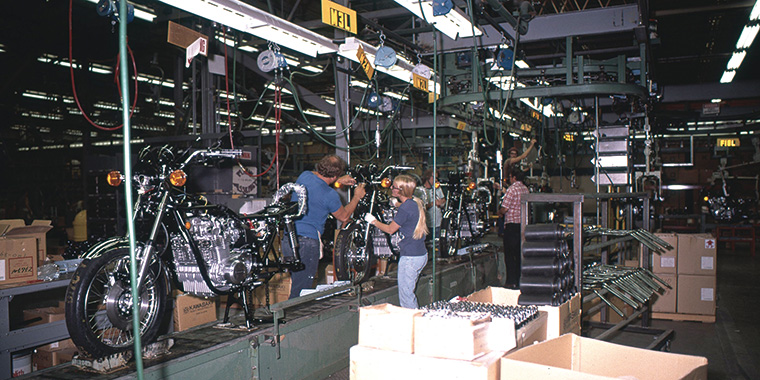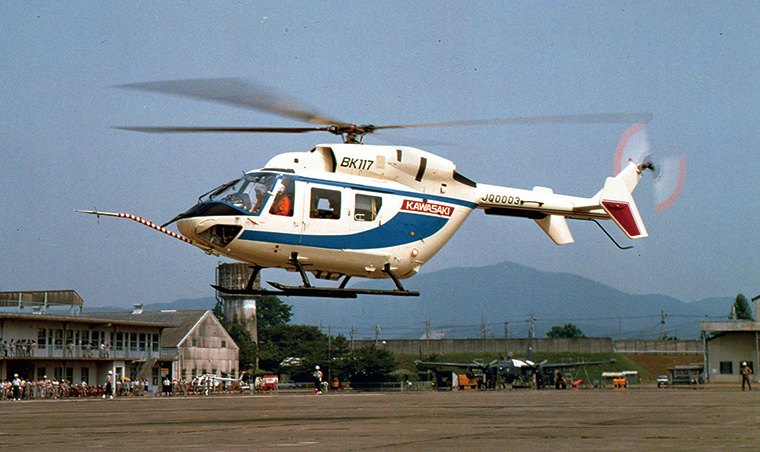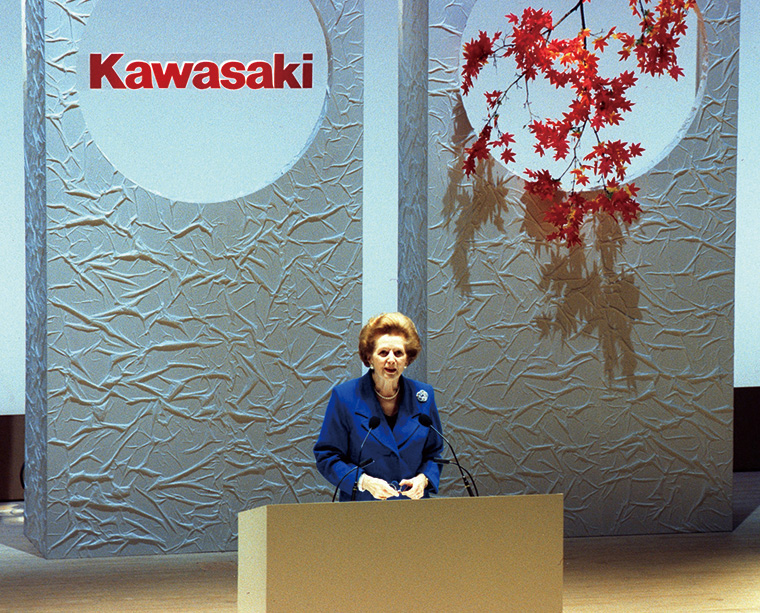Read the history
Ordeal –
Innovation
1973–1996
-
1973
Oil Crisis and Deterioration of the Business Environment
Following the first oil crisis in 1973, the shipbuilding industry was met with serious problems. Kawasaki saw a sharp drop in orders for tankers, along with a series of cancellations, ship type changes, and delivery postponements, even for vessels already under contract. Although the company took measures to improve profitability from the 1975 fiscal year, it posted its first postwar loss in the 1978 fiscal year. Kawasaki built a motorcycle factory in North America and began local production in 1975. It was the first factory in the United States for the Japanese automobile industry, including for four-wheeled vehicles.

Production line at KMC Lincoln plant
-
1977
Business stabilization and trying to make technological advancements across all areas
In 1977, Zenji Umeda became the eighth company president, and the company started taking measures to streamline operations by downsizing, reorganizing, and integrating business divisions. The company also improved company-wide profitability, consolidated and streamlined factories, and utilized existing facilities more effectively.
As the business environment worsened, we set our sights on the energy sector, such as coal utilization technology, gas turbine generators, and nuclear power as we attempted to make technological strides all sectors. This included, for example, the construction of Japan’s first LNG carrier, the development and production of the BK117 multipurpose twin-engine helicopter, and the development of the Kawasaki-Unimate 6060, the world’s first vertically articulated, group-controlled multi-robot system.

Maiden flight of the third BK117 helicopter prototype (Gifu Works)
-
1981
Turbulent global economy
As part of our new business development at the time, we were actively receiving orders for large-scale plants for overseas. However, due to conflicts and other issues at the construction sites, we faced major delays and worsening costs. During these harsh conditions, Kenko Hasegawa was appointed as the ninth company president in 1981. Additionally, our motorcycle department had worsening profits due to the economic slowdown in the United States, resulting in our first suspension of dividents in thirty-three years.
-
1987
Overcoming the crisis and establishing a stable management foundation
In a challenging business environment with a stagnant shipbuilding business and rapid appreciation of the yen, Hiroshi Ohba became our tenth company president in 1987. He implemented organizational and factory restructuring, as well as optimization of personnel scale.
In the organizational restructuring, he established a system of seven new business groups for shipping, rolling stock, aerospace, machinery, environment and energy plants, industrial machinery and steel structures, and computer products. Factory relocations, consolidations, and closures were also carried out to reevaluate the factory system.
-
1996
Celebrating our 100th anniversary
On October 15, 1996, we celebrated our 100th anniversary since our establishment. Various commemorative ceremonies and events were held to mark the occasion, including welcoming former British Prime Minister Margaret Thatcher.
The year of our 100th anniversary, our company achieved the best performance (non-consolidated) in its history.

Special lecture by former British Prime Minister Thatcher to commemorate the 100th anniversary